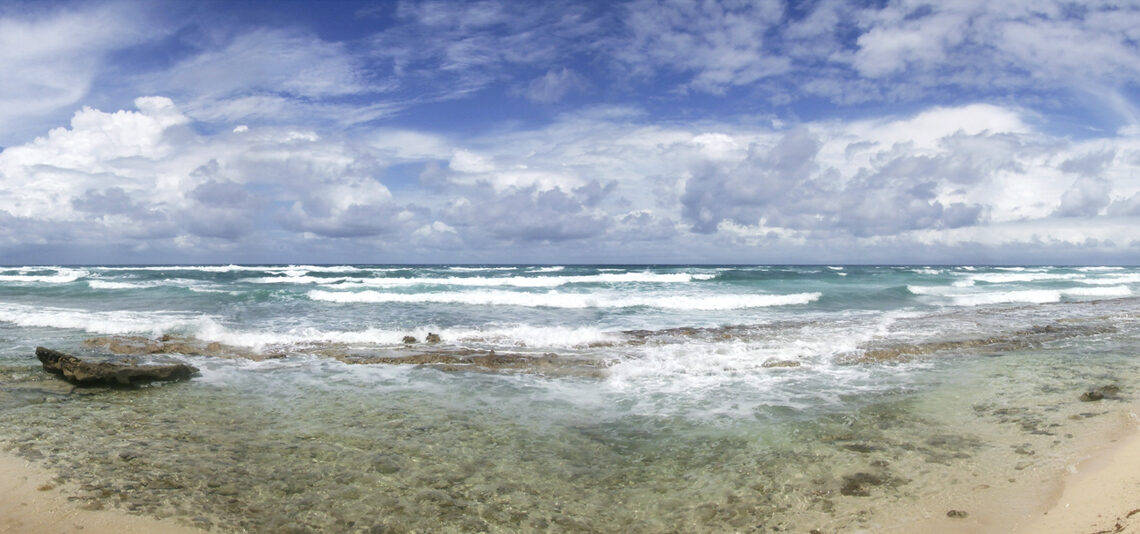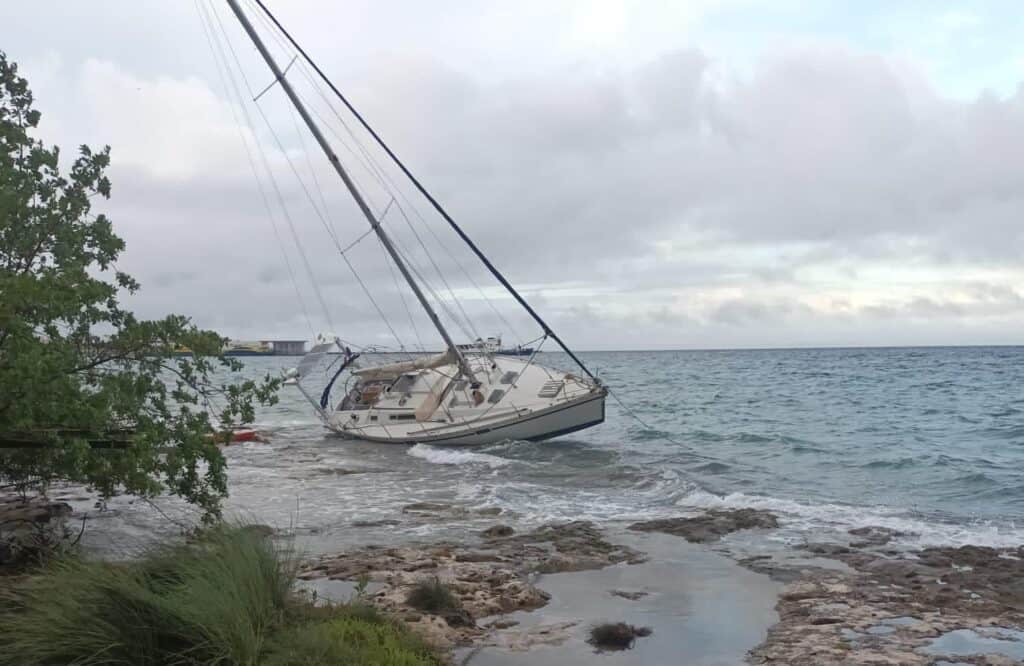That Little Weather Problem in Cozumel: The Real Deal on “Nortes” and Your Dive Trip
You’ve pictured this. You’re in Cozumel, the sun is just coming up, you’ve got your coffee in hand, and you’re staring at that perfect, turquoise water, just waiting for the dive boat.
Then you get the text from the dive shop: “Port’s closed.”
Wait, what? You look outside. It’s a little breezy, maybe, but the sky is blue. Closed? You flew all this way, you pre-paid your dives, and you can’t go. What gives?
Welcome to Cozumel’s little winter secret. It’s called a “Norte” (pronounced nor-tay), and it’s the one word that can make or break your dive plans between November and February.
I’ve seen it dozens of times. Tourists at the breakfast buffet, totally baffled. “They said it’s wind from Canada? I thought I was in Mexico!”
It’s a common story. But if you understand what a norte actually is, why it shuts things down, and (most importantly) how to have a killer Plan B, it goes from a vacation-wrecker to just… a forced surface interval.
So let’s get into it.
So, What Exactly Is This “Norte”?
You’ve probably heard of it. It’s Spanish for “north.” Simple.
A norte is just a cold front. A big one.
All winter long, these massive cold air masses build up over Canada and the northern U.S. Think of the atmosphere like a big, wobbly Jell-O mold. Every so often, a huge chunk of that cold, heavy air breaks off and tumbles south, pushed by high-pressure systems.
It blasts across the U.S., hits the Gulf of Mexico, and starts picking up moisture and serious speed. By the time this ‘front’ hits the Yucatan Peninsula, it’s a full-blown wind event.
And when a norte blows in, you feel it. The temperature might drop 10 or 15 degrees in an hour. The sky can get this steel-gray look, and the wind just howls.
Now, let’s be clear. It’s easy to chuckle and blame our friends in Canada, but the cold isn’t the problem. In fact, that drop from 85°F to a crisp 70°F (21°C) can feel amazing.
No, the problem isn’t the cold. It’s the wind. And in Cozumel, wind is everything.
Cozumel’s Climate: A (Mostly) Perfect Picture
Before we get too dark, let’s get the obvious out of the way: Cozumel is a tropical paradise. Ninety-nine percent of the time, the weather is exactly what you paid for.
The island enjoys this warm, humid climate all year, with an average temperature hovering right around a lovely 77°F (25°C). It’s why we go, right?
Sure, there’s a rainy season (roughly May to November) and that official hurricane season (June to November), which can bring big storms. But that’s a different beast entirely.
Most people, especially those of us trying to escape snow and ice, book our trips during the “peak season” from December to April. This is when Cozumel is supposed to be perfect. Dry, sunny, and warm.
And it usually is. Until a norte decides to show up.
The Real Problem: Why the Port Captain Becomes Your Worst Enemy
Here’s the part that trips everyone up. The norte itself doesn’t close the port. The wind does. And more specifically, the direction of the wind.
Cozumel’s geography is key here. All the famous reefs—Palancar, Columbia, Santa Rosa—are on the island’s west side. This is also where the town, the marinas, and the hotels are. This side is normally protected from the prevailing easterly winds, which is why the water is usually so flat and calm.
But a norte? It comes from the north, northwest, or west.
It blows directly onto that protected side, turning the calm boat channel into a washing machine.
This is where the Port Captain (Capitanía de Puerto) steps in. And trust me, you don’t want to mess with this guy. His job is safety, period.
Think about those Cozumel dive boats. They’re not giant cruise ships. Many have those low-to-the-water platforms at the back. They’re perfect for a giant stride on a calm day. They are not perfect when 3-foot waves are slamming into the back of the boat, swamping the deck, and making it a nightmare to climb back up the ladder.
It’s just not safe. So the Port Captain makes the call.
Here’s the technical bit: You can be your own weather forecaster. The dive ops all use sites like Wind Guru. If you see the forecast showing winds climbing to 10 knots or higher, and the arrows are pointing from the W, NW, or N, there’s a very good chance the port will be closed to “embarcaciones menores” (small boats).
That means divers, snorkelers, fishing charters, and glass-bottom boats are all grounded.
The big car and passenger ferries that run to Playa del Carmen? They play by different rules. They have their own safety margins and decide based on whether they can dock safely. So don’t be confused if you see the ferry running while your dive boat is tied to the dock.
How a Norte Messes With the Dive Day (Even If You Go)
Okay, so let’s say the wind isn’t quite bad enough to close the port, but it’s still blowing. What’s the dive like?
Well… it’s sporty.
Two things happen:
Currents Get Wild: Cozumel is famous for its drift diving, which is usually like a lazy river. A norte can turn that lazy river into a whitewater rapid. The currents get stronger and can be unpredictable. This is not the time for your checkout dive or if you’re a bit rusty. If you’re an experienced diver who loves a challenge? You might actually find it thrilling. But you need to be on your game.
Visibility Can Drop: All that wind and wave action churns up the water, especially in the shallower spots. It can kick up sand, and that crystal-clear 100-foot visibility can drop to 40 or 50 feet. It’s not always the case, but it’s common.
The good news? Nortes blow through fast. They rarely stick around for more than a day or two. And—this is the best part—the diving after a norte passes is often the best you will ever see. The wind flips back to its normal pattern, the water flattens out like glass, and it feels like the whole system has been “flushed,” leaving behind stunningly clear water.

So You’re Grounded. Now What?
This is the most important part. A ‘lost’ dive day doesn’t have to be a lost vacation day. Don’t just mope at the hotel bar (or, at least, don’t just do that).
This is where you separate the rookies from the travelers. You pivot.
Your Actionable Plan B:
First, Talk to Your Dive Shop: They live this. They always have a Plan B. They’re watching the forecast more closely than you are. They’ll know if the port is likely to open in the afternoon, or if tomorrow looks better. They’ll reschedule you.
Ask About Sheltered Sites: Sometimes, even if the main channel is closed, the Port Captain will allow boats to run to a few “honey holes”—dive sites on the EAST side that are protected from the north wind. It’s not Palancar, but hey, it’s diving.
Embrace the “Surface Interval Day”: This is your perfect excuse to explore the other Cozumel. The one you can’t see from a boat.
Rent a Jeep. (A real one, not a scooter. You’re not 22 anymore, and the wind on the other side is no joke).
Drive the “Wild Side”: Go explore the east coast. With a norte blowing, you can’t swim (and you should never swim over there anyway, the rips are serious), but the waves are massive. It’s raw and beautiful. Find a little beach bar, grab a cerveza and some fresh fish, and just watch the spray. It’s a different kind of power.
Go to Punta Sur: Head to the eco-park at the southern tip. Climb the lighthouse (the view is incredible), take the boat tour on the lagoon (you’ll see crocodiles), and check out the Mayan ruins.
Visit San Gervasio: Go inland and see the island’s main Mayan ruins. It’s a fascinating look at the island’s history.
Do That Tequila Tasting: You know you were curious.
A ‘lost’ dive day can easily turn into one of the most memorable land days you have. You just have to be flexible.
Picking Your Poison: When Is the “Best” Time to Go?
That “Cozumel Weather by Month” list you see on travel sites is fine, but it doesn’t tell the real story. Here’s the breakdown as I see it.
“The Norte Season” (Winter: December – February) This is peak season for a reason. The weather, when it’s not blowing, is gorgeous. Highs in the low 80s (28°C), low humidity, cool nights. It’s perfect. But, this is norte season. You come at this time, you roll the dice. You might get zero nortes… or you might get two of them and lose a couple of dive days.
“The Sweet Spot” (Spring: March – May) This, in my opinion, is the golden window. The nortes are pretty much done for the year. The water is warming up. The intense summer humidity hasn’t kicked in yet. And the hurricane risk is zero. It’s just… perfect.
“The Hot & Humid” (Summer/Fall: June – November) This is the “off-season.” It’s hot. It’s humid. And it’s hurricane season. The trade-off? Fewer crowds and lower prices. The diving can be spectacular (the water is bathtub-warm), but you are absolutely watching the weather forecast for a very different, much more serious, reason.
The Bottom Line
Look, a norte isn’t a trip-killer. It’s just an interruption.
It’s a powerful, humbling reminder that we’re just visitors here, and Mother Nature is very much in charge.
The best way to handle a trip to Cozumel in the winter is to go in with your eyes open. Understand that you might lose a day. Build a ‘flex’ day into your schedule. Don’t book your “must-do” dive for your very last day.
And if you wake up to that text, don’t let it get you down. Order your huevos rancheros, pull up Wind Guru on your phone just to feel like you’re in the know, and start planning your ‘dry’ day.
The reefs will still be there tomorrow. And they’ll probably be even more beautiful.
![]() Why Book With Us?
Why Book With Us?
Book through this website; we guarantee you’ll get the lowest price online. You’ll be dealing with us, the owners, and we never charge booking fees so that you can save up to 30% of the cost over sites like Airbnb. Book our Cozumel Villas here.


